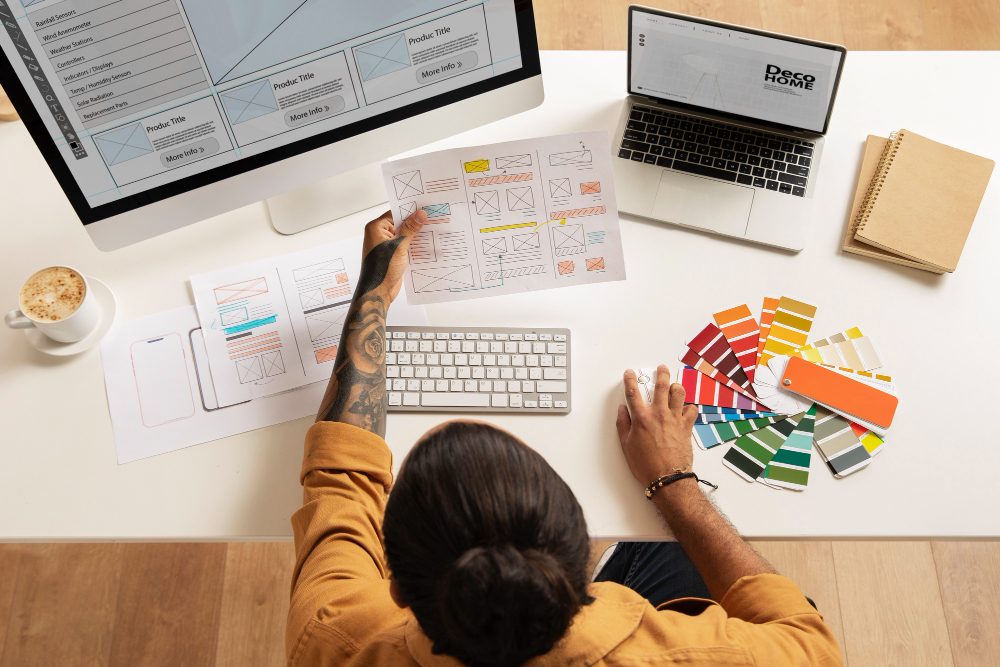Designing for Everyone: A Guide to Accessible Web Design

Designing a beautiful website is one thing, but creating one that everyone can use is another. Web accessibility ensures that people with disabilities—including visual, auditory, motor, and cognitive impairments—can navigate, understand, and interact with your website effectively. It's not just a matter of compliance or a "nice-to-have" feature; it's a fundamental aspect of inclusive and ethical web design.
An accessible website broadens your audience, improves user experience for everyone, and strengthens your brand's reputation as one that values inclusivity. For businesses, this translates to a larger potential customer base and better SEO performance, as many accessibility best practices overlap with search engine optimization principles.
This guide will walk you through the essential principles of accessible web design. We'll provide practical, actionable steps you can take to make your website more inclusive, ensuring that every visitor has a positive and seamless experience, regardless of their abilities.
Why is Accessible Web Design Important?
Approximately 16% of the global population, or 1.3 billion people, experience a significant disability. When a website isn't designed with accessibility in mind, it effectively closes the door on this substantial portion of the population. This exclusion not only limits their access to information, products, and services but also reflects poorly on the brand.
Beyond the ethical imperative, there are strong business reasons to prioritize accessibility. Search engines like Google favor websites that provide a great user experience, and many accessibility features—such as clear site structure, alt text for images, and transcripts for videos—are signals of a high-quality site. Furthermore, in many regions, web accessibility is a legal requirement. Ignoring it can expose your business to potential lawsuits and fines.
By embracing accessible design, you create a better experience for all users, not just those with disabilities. Clear navigation, readable text, and straightforward layouts benefit everyone, leading to higher engagement and conversion rates.
Key Principles of Accessible Web Design
To create a truly accessible website, you should ground your design process in a few core principles. The Web Content Accessibility Guidelines (WCAG) are the international standard, and they are organized around four main pillars, often remembered by the acronym POUR.
Perceivable
Information and user interface components must be presentable to users in ways they can perceive. This means users must be able to process the information, even if they can't see or hear it in the conventional sense.
- Provide Text Alternatives: All non-text content, like images and icons, needs a text alternative (alt text). This descriptive text is read aloud by screen readers, allowing visually impaired users to understand the content of the image.
- Offer Alternatives for Time-Based Media: For video content, provide captions for those who are deaf or hard of hearing. For audio content, offer a transcript.
- Create Adaptable Content: Your web design should be simple and structured, allowing it to be presented in different ways without losing information. For example, a screen reader should be able to read the content in a logical order.
Operable
User interface components and navigation must be operable. This means users must be able to interact with all controls and interactive elements.
- Ensure Keyboard Accessibility: All website functionality should be available using only a keyboard. Many users with motor disabilities rely on a keyboard or keyboard emulators to navigate.
- Provide Enough Time: Give users enough time to read and use content. Avoid auto-playing carousels or content that disappears too quickly. If you have time limits on tasks, provide a way to extend them.
- Avoid Seizure-Inducing Content: Do not design content that flashes or blinks more than three times per second, as this can trigger seizures in some individuals.
Understandable
Information and the operation of the user interface must be understandable. Users should be able to comprehend the content and learn how to use the website easily.
- Make Text Readable: Use clear, simple language. Organize content with headings and subheadings to create a logical structure. Ensure there is enough contrast between text and its background to make it easy to read.
- Create Predictable Web Pages: Navigation should be consistent across your entire site. Interactive elements should behave in expected ways.
- Help Users Avoid and Correct Mistakes: Provide clear error messages and instructions. For example, if a user fills out a form incorrectly, highlight the specific field and explain what needs to be fixed.
Robust
Content must be robust enough that it can be interpreted reliably by a wide variety of user agents, including assistive technologies. As technology evolves, your content should remain accessible.
- Use Clean Code: Write valid HTML and CSS. This ensures that assistive technologies, like screen readers, can accurately interpret and parse your content.
- Communicate Name, Role, and Value: For all user interface components, ensure their purpose is clear in the code. For example, a button should be coded as a button, not a
<div>styled to look like one.
Ready to Build an Inclusive Website?
Creating an accessible website is an ongoing commitment to inclusivity and user experience. By following the principles of perceivable, operable,understandable, and robust design, you can build a digital presence that welcomes everyone. It’s a move that benefits your users, your brand, and your bottom line.
If you’re ready to create a website that is both beautiful and accessible, you don’t have to do it alone. The world of web design is complex, and ensuring compliance with accessibility standards requires expertise.
If you need professional web design, contact REK Marketing & Design today for more information. Our team is ready to help you build a website that works for everyone.